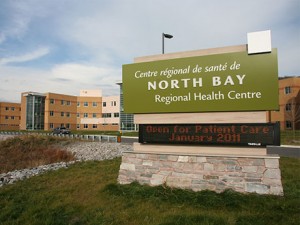 A recent petition that proposes Ontario be split into two separate provinces, Northern and Southern Ontario, has gathered more pace in recent days and now has over a thousand names assigned to the cause.
A recent petition that proposes Ontario be split into two separate provinces, Northern and Southern Ontario, has gathered more pace in recent days and now has over a thousand names assigned to the cause.
Of course, the idea of splitting the province is not a new one, and has been mooted by groups representing Northern Ontario for decades. It is those groups that a new grassroots movement is taking its inspiration from, with the petition founder, Trevor Holliday, saying he has been inspired by historical Ontarian separation movements, especially the 1970s’ Northern Ontario Heritage Party and other Northern Ontario separatist movements.
The petition is currently online at Change.org and has been open since Jan 1. 2016, with Holliday saying:
“I would want Northern Ontario to become its own province. That way it can be run by the people of the North for the people of the North, so that all the money from the North isn’t taken and given to the south and then we’re just left to whittle away.”
Disgruntled residents of Northern Ontario have often complained about the bias shown to southern parts of the province, with the north typically underfunded in comparison. The idea behind the new movement is for the province to be split into two separate entities, and Holliday and his supporters say Northern Ontario is more than self-sufficient enough to get by on its own.
Southern Ontario is home to Canada’s most populated city, Toronto, and other major municipalities that are the focus of government spending. Supporters of an independent Northern Ontario say there is a lack of infrastructure spending in the north and traffic spending is mostly reserved for the Greater Toronto Area.
“This idea goes back to the beginning of Northern Ontario and I’m reading reports in 1905, 1906 of rallies to separate and it usually goes in waves when there seems to be a growing imbalance,” said MP Charlie Angus (NDP — Timmins-James Bay).
“I think there’s a great deal of frustration in Northern Ontario right now when we see the policies that are driven from the south and when we see the complete imbalance in political representation between the issues of the North and the urban south. I understand why people are frustrated.”

 Environment Canada has issued a special weather warning for a winter storm that is moving into the North Bay area on a northerly course from the United States. The agency said the severe winter storm is likely to effect the entire Northern Ontario region and has issued a weather warning for the following:
Environment Canada has issued a special weather warning for a winter storm that is moving into the North Bay area on a northerly course from the United States. The agency said the severe winter storm is likely to effect the entire Northern Ontario region and has issued a weather warning for the following: The Ontario Provincial Police (OPP) says ongoing work to clear a collision on Highway 69 means the road is closed until further notice.
The Ontario Provincial Police (OPP) says ongoing work to clear a collision on Highway 69 means the road is closed until further notice.  The District of Nipissing Social Services Administration Board has brought in a third party consultant to review programs in the area designed to help poor and sick people. The consultant will look for ways in which services can be improved, become more efficient, and offer more value.
The District of Nipissing Social Services Administration Board has brought in a third party consultant to review programs in the area designed to help poor and sick people. The consultant will look for ways in which services can be improved, become more efficient, and offer more value. Stacie Fiddler, the Labour Market Group’s (LMG) Executive Director, suggests that there is a disconnect between jobseekers and employers in the North Bay region. Simply, there are jobs available, but many jobseekers think that there is no significant new employment in the regions.
Stacie Fiddler, the Labour Market Group’s (LMG) Executive Director, suggests that there is a disconnect between jobseekers and employers in the North Bay region. Simply, there are jobs available, but many jobseekers think that there is no significant new employment in the regions. The City Council of North Bay has agreed to form a long awaited sub-committee to scrutinize the city’s services and operations in the form of a review.
The City Council of North Bay has agreed to form a long awaited sub-committee to scrutinize the city’s services and operations in the form of a review.  A worrying trend is happening among Canada’s young people, suggesting they are not sure about their retirement savings plans, with nearly a third admitting they are “not at all knowledgeable” about the subject.
A worrying trend is happening among Canada’s young people, suggesting they are not sure about their retirement savings plans, with nearly a third admitting they are “not at all knowledgeable” about the subject. The provincial government of Ontario announced on Monday that it is freezing the cost of hospital parking fees for the next three years. The announcement means that hospital parking around North Bay and Ontario as a whole will remain frozen at its current price, effective immediately.
The provincial government of Ontario announced on Monday that it is freezing the cost of hospital parking fees for the next three years. The announcement means that hospital parking around North Bay and Ontario as a whole will remain frozen at its current price, effective immediately.  A spate of home thefts in the North Bay and Northern Ontario area have led to the Provincial Police (OPP) reminding residents to make their homes safe when out.
A spate of home thefts in the North Bay and Northern Ontario area have led to the Provincial Police (OPP) reminding residents to make their homes safe when out.